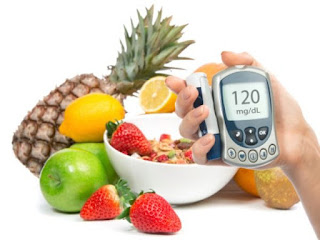Manage your Diabetes
By KUPOLUYI AyomikunOluwakemi
The thought of visiting your doctor for a medical checkup can somehow be scary but it is probably the secret for one’s long life. Have you been diagnosed of diabetes mellitus? Do you living with the disease? The following are tips to manage the disease, therefore, relax as you go through them. Being diagnosed as diabetic patient should not be viewed with hopelessness as if it is the end of the world for you.
Diabetes mellitus is a chronic metabolic disease that occurs when the pancreas is no longer able to make insulin or when the body cannot make good use of the insulin it produces. Insulin is a peptide hormone that helps to transport glucose from the blood into the cells for conversion into energy.
Hyperglycemia is simply an increase in blood glucose due to insulin malfunction. It is believed that diabetes affects about 350 and 400 million people worldwide. Half of these people are not even aware they have this condition!
TYPES OF DIABETES
Scientists have since identified three main types of diabetes and they are:
1. Type 1 Diabetes Mellitus(DM) - This occurs when the pancreas does not produce insulin at all. It is observed mostly in children and young adults. Its onset is earlier. It is also referred to as Insulin-dependent DM because the patient needs Insulin injection for its management.
2. Type 2 Diabetes Mellitus(DM)- This is when the pancreas does not produce enough insulin or the insulin cannot be used properly by the body. It has a late onset. It is also called Non-Insulin dependent DM because Oral Hypoglycaemic(Sugar-lowering) drugs might be needed for its treatment most of the time.
3. Gestational Diabetes Mellitus(DM) - This occurs only in pregnant women as a result of the hormonal interplay of pregnancy.
Diabetic Facts:
v 90% of Diabetes patients suffer from Type 2 Diabetes mellitus.
v Both men and women have equal risk of diabetes (except gestational diabetes).
v Type 2 diabetes now affects even people less than 60 years old.
v It is predicted that in the next twenty years, the number of people living with diabetes will be almost double.
v Lifestyle change such as weight loss, healthy diet and exercise is more effective in managing diabetes than most drugs.
v Physical activity helps lower blood glucose even in diabetes mellitus patients.
Risk Factors:
The following people have a higher probability of developing diabetes:
1 Family history of diabetes
2 Overweight
3 Unhealthy diet
4 Physical inactivity(Sedentary lifestyles)
5 Increase in age
6 High blood pressure
7 History of gestational diabetes
8 Poor nutrition during pregnancy
EFFECTS OF DIABETES MELLITUS
The following are a few of the effects of diabetes:
1 Damage to blood vessels.
2 Eyes, kidneys, foot and brain damage.
3 Increased risk of colon cancer and dementia.
4 Cuts and wound may take longer to heal.
Symptoms:
· It may be without symptoms-only detected by routine blood sugar screening exercise.
· Frequent urination, excessive thirst, increased hunger, weight loss, tiredness, a tingling sensation or numbness in the hands or feet, blurred vision, frequent infections, slow-healing wounds, vomiting and stomach pain.
· It presents with complications: loss of consciousness (Diabetic Ketoacidosis, DKA), impotence in men etc.
Treatment:
v Patients with Type 1 Diabetes Mellitus(DM) will need to takeinsulin injections for the rest of their life. They must also ensure proper blood-glucose levels by carrying out regular blood tests and following a special diet.
v Patients with Type 2 diabetes are usually treated with tablets, exercise and a special diet, but sometimes insulin injections are also required.
Diabetes Mellitus and Diet:
Diabetic are advised to eat healthy food items such as:
1. Healthy food: Focus on thehealthiest carbohydrates, with reduced quantity but more of protein diets. Whole grains are preferable.
2. Low-fat dairy products.
3. Fiber-rich foods such as vegetables, fruits, nuts, legumes (beans, peas and lentils), whole-wheat flour and wheat bran.
4. Heart-healthy fish.
5. Good fats such as avocados, almonds, pecans, walnuts, olive and peanut oils etc.
By KUPOLUYI AyomikunOluwakemi
ayomikunkupoluyi@gmail.com



Comments